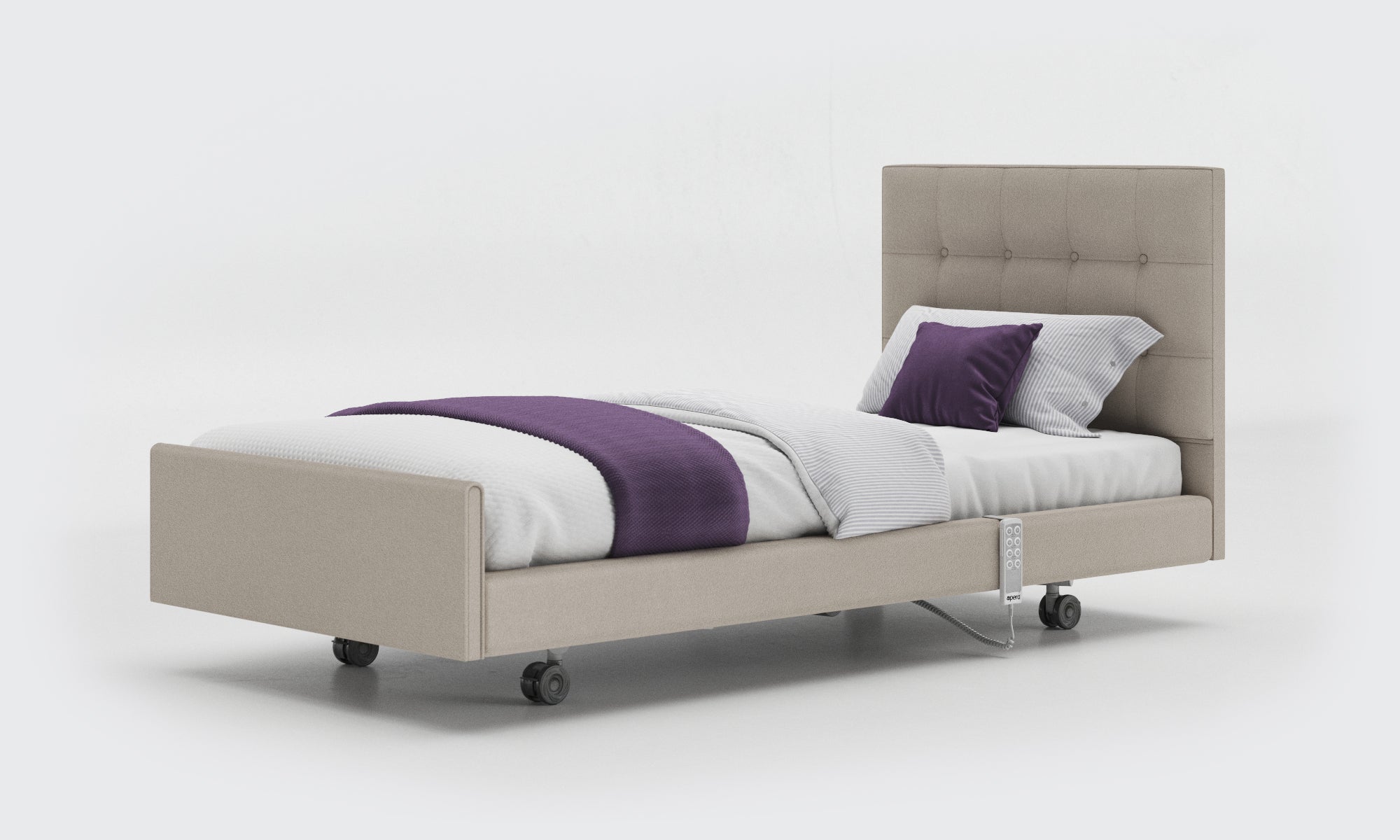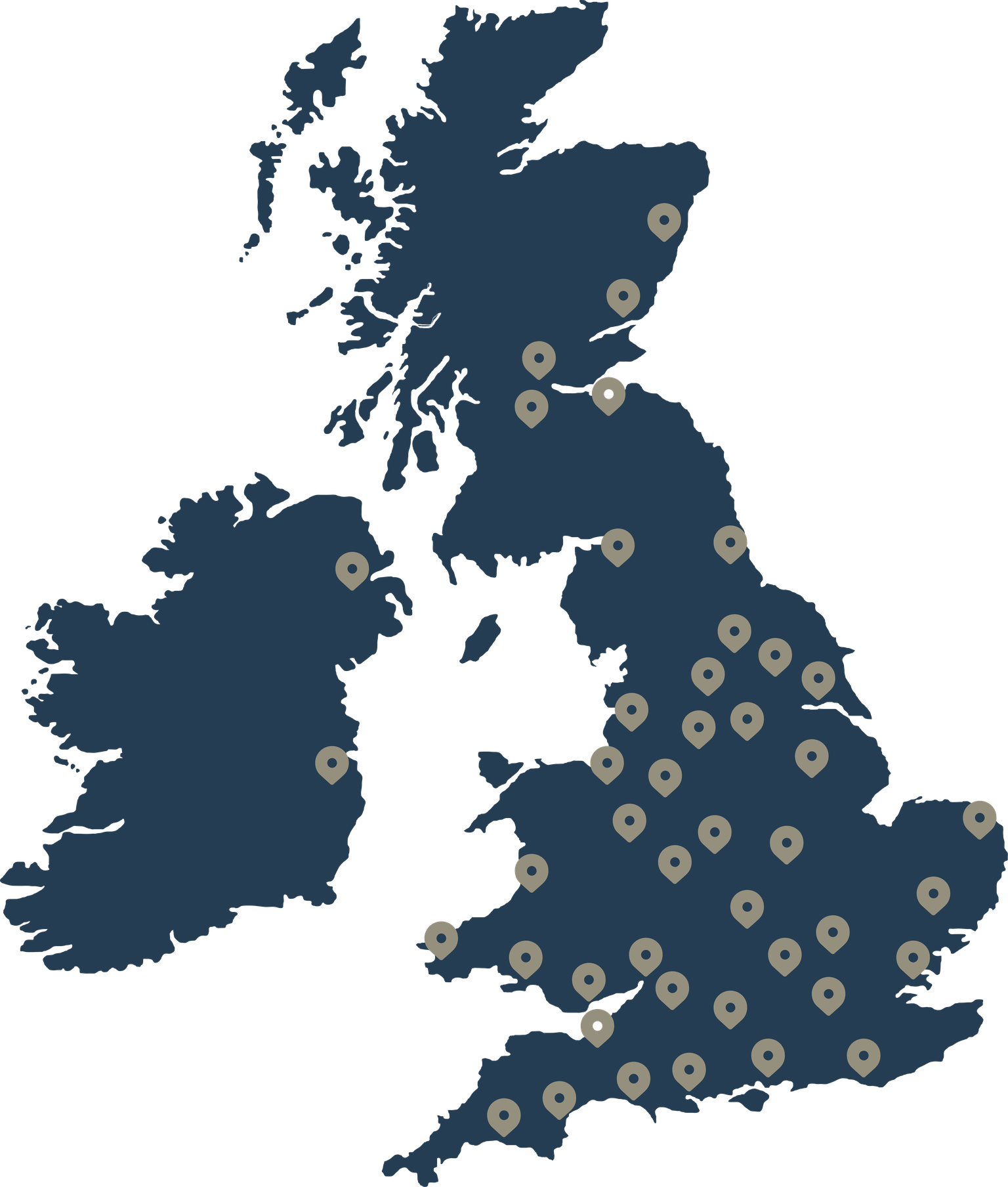Chronic obstructive pulmonary disease (COPD) is the name for a group of lung conditions that cause a person to experience breathing difficulties.
This includes:
Emphysema – where there is damage to the air sacs in the lungs
Chronic bronchitis – longer-term inflammation affecting the airways
COPD causes coughing that can produce mucus, as well as causing breathing problems, shortness of breath and tightness of the chest. In many cases, COPD affects middle-aged or older adults who smoke. Many people with COPD don’t realise they have it. COPD can be prevented, mainly by not smoking.
Over time, people with COPD experience breathing problems that gradually worsen which can limit their regular activities. However, there are treatments available to help stabilise the condition.
Related blogs

How Adjustable Beds Help with COPD
Chronic Obstructive Pulmonary Disease (COPD) is a chronic lung disease that can cause breathing difficulties, fatigue, and other symptoms that can impact quality of life....

Getting a Good Night’s Sleep for Long-term illnesses
Making sure you’re getting a good night’s sleep is important if you or your loved one has a long-term illness. A long-term illness (also known...
What are the Common Symptoms of COPD?
For most people with COPD symptoms become noticeable when they reach their late 40’s or 50’s. COPD has a range of symptoms, the most common include:
- breathlessness – to begin with, this can occur when exercising or during the night
- a constant chesty cough with phlegm that doesn’t go away
- regular chest infections
- frequent wheezing
It is common for those with COPD to experience periods where symptoms get suddenly worse, which is typically referred to as a flare-up or exacerbation. Flare-ups can occur throughout the year, especially during the winter period.
In advanced stages of COPD, symptoms may be so severe that they can prevent you from carrying out even basic activities like walking or taking care of yourself. It's important to seek medical attention if you experience any of these symptoms to get a proper diagnosis and treatment plan.
Less Common COPD Symptoms
There are also less common symptoms of COPD which tend to occur in the advanced stages of the disease. These are:
- Weight loss
- Fatigue
- Oedema (swelling in the legs, ankles and feet from the build-up of fluid)
- Chest pains and coughing up blood (these symptoms are usually signs of another condition like a chest infection or potential lung cancer)
Living with COPD
COPD can have various implications on an individual's life, but there are strategies to mitigate its effects.
Taking care of yourself
After receiving a diagnosis of COPD, you must follow the advice given to you and take good care of yourself. This often includes:
Taking your medication – you must take any prescribed medication which can include inhalers, to prevent a flare-up. It is best practice to read the information provided with your medication about potential interactions with different medications. It’s advised to speak with your care team or GP regarding over-the-counter medication to avoid any interference or side effects.
Quit smoking – if you smoke, stopping can help slow down COPD symptoms and prevent further damage from occurring.
Regular exercise – The level of physical activity that you engage in should be based on your symptoms; nevertheless, staying active can enhance both your symptoms and overall quality of life. It is generally safe to exercise until you feel slightly breathless, but it is important not to overexert yourself. If your symptoms are severe or you haven't exercised in a while, it is always advisable to consult with your GP before starting a new exercise routine.
Maintaining a healthy weight – being overweight can make breathlessness worse. Some people with COPD can lose weight unintentionally, therefore eating protein-rich foods can help keep to a healthy weight.
There are further ways to help live with COPD which include:
- Getting vaccinated
- Regular checkups and monitoring
- Being mindful of what you breathe (such as hairspray, perfume, car exhausts, smoke, dusty places)
- Checking the weather forecasts for humidity, cold spells and hot weather which can affect your breathing
Related Videos
Diagnosing COPD
If you, or a loved one experience persistent symptoms of COPD, a visit to the GP is advised. To help achieve a diagnosis, your GP may do the following:
- Ask questions about our symptoms such as the length of time and the frequency
- Ask about your smoking history
- Examine your chest and listen to your breathing by using a stethoscope
- Ask around your family history of lung problems
- Calculate your BMI (body mass index) by taking your weight and height
There are also a series of breathing tests you may be asked to undertake to determine if you have COPD. These include:
Spirometry – you’ll be asked to breathe into a specialist machine called a spirometer after taking a medicine called a bronchodilator (this helps to widen your airways)
Chest x-ray – this is to look for problems with your lungs which include chest infections and lung cancer. However, these may not always be shown.
Blood tests – a blood test can flag up any conditions that can cause similar symptoms to COPD such as anemia (low levels of iron) and a high concentration of red blood cells (known as erythrocytosis)
Depending on your symptoms, your GP may wish to take further tests such as a CT scan, ultra-sound, phlegm sample, ECG (electrocardiogram) or a blood oxygen test.
Treatment
Unfortunately, there is no current cure for COPD but there are ways to help slow the progress of the condition and manage symptoms. These include:
- Stopping smoking – the most effective way to prevent COPD from getting worse. Stopping smoking can help to prevent further lung damage – even for those with advanced symptoms
- Take an inhaler or medication such as steroids to assist with breathing
- A specialist rehab programme focusing on pulmonary exercises and education
- Surgery or lung transplant – although this is for very few people with COPD
Palliative Care
COPD is a serious condition that does progress over time and can become life-threatening in the very advanced stage. It’s important to be supported by friends and family during this time.
As COPD progresses, your doctor should work with you to establish a clear management plan based on your wishes. This includes determining where you are cared for at home, hospital or hospice.
Further Advice and Support
There are many ways to get further support such as online communities and forums if you or a loved one have COPD.
- Asthma and Lung UK online support group
- Health Unlocked community forum
Beds for COPD

Signature Upholstered Profiling Bed
- Stylishly upholstered head/footboards
- All-in-one height range 24.5-73cm
- Raises up to carers waist level
- Lower sleeping height for vulnerable users
£2,695 With VAT Relief

Motion
Adjustable Base
- Minimalist Practical Styling
- Adjustments, Zero Gravity, Light, Massage and More
- Single, Small Double, Double, King & Super King Sizes
£695 With VAT Relief

Signature Comfort Profiling Bed
- Fully upholstered with a range of headboard choices
- Great choice for style-conscious users
- All-in-one height range 24.5-73cm
- Ideal choice for users with home-visit carers
£2,895 With VAT Relief

Emerald Motion
Adjustable Bed
- Complete with Button-Back Headboard
- Range of Adjustments Including Zero-Gravity
- Wireless Control with Illuminating Buttons
- Single and Dual Sizes Available
- Choice of Linen or Anthracite Fabric
£945 With VAT Relief

Signature Comfort Dual Profiling Bed
- Dual care bed for two people
- Fully height adjustable for easier getting in/out
- Stylish design with headboard choices
- Ideal choice for couples with care needs
£4,995 With VAT Relief

Emerald Motion Divan
Adjustable Bed
- Full Deep Divan Style Complete with Button Headboard
- Comes with a Range of Adjustments & Optional Upgrade
- Available in Single & Dual Size
- Choice of Fabric & Storage Drawers
£1,245 With VAT Relief

Eden Premium
Adjustable Bed
- Elegant, Timeless Design
- Back/leg adjustment, ZG and Anti-Snore
- Size and Fabric Options
- Optional Feature Upgrade
£1,895 With VAT Relief















